Hello,
Today, it’s one of my favourite newsletters: It’s a cookbook special! I have the pleasure of delving into a subject that I don’t know a lot about: Bitterness.
Alexina Anatole’s debut cookbook ‘Bitter’ (which is out now) delves into the world of this overlooked or forgotten taste; I’m thrilled to be sharing a Q&A and excerpt from the book with her recipe for coffee and walnut baklava.
Over on KP+, I’m thrilled share a sister crispy pastry recipe: Bitter greens Börek! You know I love a savoury bake! Click here to read it.
What’s KP+? Well, it’s the level up version of this newsletter. By joining KP+, you will support the writing and research that goes into the newsletter and get access to an amazing community, extra content, the full archive, and more. Subscribing is easy and only costs £5 per month. Why not give it a go? Come n join the gang!
Love,
Nicola
A bit of bitter to things better
You know I love a cookbook. So I welcome Alexina Anatole’s debut book ‘Bitter’, which was released this week, with open arms. It’s the start of her exciting new book series, exploring the five tastes in detail (‘Sweet’ is due out in 2025). Alexina, who has roots in South London, Paris and Saint Lucia and studied English at Cambridge University, had a decade-long career in investment banking before a sharp turn into the world of food, landing her in the MasterChef 2021 finals where she became known for her love of bitter flavour profiles. Since then, she has continued to pursue her obsession with food and flavour with supperclubs and events, as well as developing recipes for her new book series, the first of which we will be diving into today.
In the opening pages, Alexina writes that bitterness often ‘gets picked last for the team.’ I consider myself to have a somewhat developed palette, but I’ll admit I don’t often prioritise bitterness. It’s a word with inextricable negative connotations, with a series of related adverbs and nouns with harsh meanings. I mean, the word is apparently derived from the old English ‘bitterness’, which also meant ‘grief’. Yikes!
So why are we so wary of bitterness? To quote Alexina’s introduction, “Its prolonged association with poison hardly helps: our ability to detect bitterness is widely believed to have been born out of a need to protect ourselves from consuming toxic plants and substances. The truth is that while not all bitter foods are toxic, most toxic foods are bitter.” In her debut, Alexina aims to show us all that there’s nothing to fear and so much to gain from bitterness.
There are many bitter ingredients we don’t tarnish with the fear brush in the kitchen - coffee, tea and cocoa all have bitter profiles that don’t make us panic. Yet, I’ll admit I still have some residual anxiety around bitterness. If you feel similarly, I’m thrilled to tell you that Alexina is a competent and soothing guide.
Did you know that there is only a single type of receptor on our tongues that register sweetness, but twenty-six that register bitterness?! There’s an entire world of flavour out there - from the earthy bitterness of beer to the fragrant bitterness of grapefruit, Alexina breaks down ten of the most widely available bitter ingredients, sharing their historical (and scientific) backstories, as well as the multitude of flavour and health benefits.
The book starts with a bit of a five-step program - Alexina’s top ways to embrace bitterness. From soothing with dairy to distracting with acidity, there’s a range of savoury and sweet recipes to suit your mood. From roasted chicken with beer butter onions to negroni pavlova to liquorice and lemon doughnuts to black velvet cake, which you can wash down with celery pisco sours or Saint Lucia cocoa tea, there are plenty of recipes to encourage you down the bitterness rabbit hole.
Today, along with a Q&A, have the pleasure of sharing Alexina’s coffee and walnut baklava recipe, a classic flavour pairing in a new outfit. Over on KP+, the filo party continues (I personally love grouping baking families together - so convenient for prep!) with a tender, crispy, swirly bitter greens börek:
The Q&A
Alexina, welcome newsletter! Let’s get right into it: Your cookbook series will explore the five tastes in depth. What inspired you to start with "Bitter," and how do you see this exploration benefiting home cooks?
Alexina: I decided to start with bitterness because it's the taste we're probably least comfortable/familiar with – and that intrigued me.
Bitterness represents a number of conundrums: why do we typically shy away from the concept of bitterness when so many of the world's most popular foods are characterised by this taste profile (not least coffee, alcohol and chocolate)? Why is there a narrative around bitterness signalling poison when so many bitter foods are phenomenally good for us? Why are espressos, negronis and bitter dark chocolate becoming ever more popular, whilst we simultaneously breed bitterness out of our fruit and veg? It felt like there was a lot to unpack!
I should also say that the seed for exploring bitterness was sown during my time on MasterChef when the judges kept singling out my use of bitter and strong flavours (something that John Torode said really stuck with me: "Your ability to take very strong bitter, sharp flavours and marry them together with majesty is incredible"). But whilst this feedback kept coming up in each round, the truth is that I didn't initially know why I had relied on bitterness so much – because whilst I do enjoy bitter flavours, I love the other taste profiles just as much! Eventually, I came to realise that I had used bitterness to ensure that my food had an impact, in part because a number of the tools that I usually relied on to ensure my food was delicious (time and memories!) had been taken away. There are so many ways to add dimension to your food, but in a competition setting, your options are more limited – so bitterness became my best friend on the show!
Bitterness can be an acquired taste. How do you encourage readers to embrace and appreciate bitter flavours? What recipe do you suggest people start with?
Alexina: I don't think I'm the only one whose palate has changed as I've transitioned from kid to teenager to adult. There's a reason the likes of Haribo, Starburst, and Skittles are geared towards children: they're predominantly sweet and fairly limited in flavour. As we age, most of us seem to leave this sweet obsession behind and gain a greater appreciation for bitter flavours such as dark chocolate, coffee and booze. This is not about "sophistication"; it's simply that our brains change. Kids don't have an "off" button when it comes to sugar because sugar is a high-energy food that delivers maximum calories, thereby supporting the aim of the game, which is growth. Once we've reached adulthood, pursuing calories isn't as urgent, so more foods become fair game – we no longer crave the one-note sweetness that punctuated our childhoods, and we are more likely to be enamoured by food experiences that deliver multiple tastes and sensory levels… that are sweet and sour and salty, hot and cold, crunchy and smooth.
Beyond this, changes occur over the course of our adult lives: not only do our tastebuds die, and our sense of smell dulls -- one of the reasons that we seek stronger flavours as we age – but we also build a deeper and broader library of experiences and memories: meals shared with those we love, holidays spent languorously enjoying local food, new tastes experienced with new friends... So much of our enjoyment of food is contextual.
When it came to Bitter, I decided to structure the book around 10 bitter ingredients because I felt that this would be an intuitive way into the topic. People might think they don't like bitterness until they see that there's a chapter on coffee, cocoa, beer, or tahini – all delicious, mainstream/readily available ingredients! I would hope that most people would gravitate to at least or two of the chapters to start with and then be encouraged to explore further out of their comfort zones. The book also provides guidance on how to balance bitterness via 5 different strategies listed upfront (more on this below!).
The recipe I would recommend that people start with is the chicory, walnut, and Roquefort salad: it's simple, illustrates the beauty of bitterness, and also demonstrates how strong flavours can balance each other out. Plus, it only takes 15 minutes to make!
How do you balance bitter flavours with other taste profiles like sweet or savoury in your recipes? (How do you make sure you're staying 'true' to the original profile while balancing it?)
Alexina: This is something I really struggled with at the start of the book-writing process. In the first instance, I felt that a book called "Bitter" should really deliver on the bitter promise. On top of this, I felt pressure from the reputation I seemed to have developed on MasterChef for punchy flavours: it made me feel that I needed to be knocking people over the head with flavour in every recipe. But the truth is that there is plenty of room for subtlety and gentleness in food – it doesn't always have to be a flavour explosion. In the end, I had to tune back into the key argument that I make in the book: that incorporating bitter ingredients and flavours into your cooking can add depth and complexity without necessarily knocking you around the head with bitterness.
And in terms of balancing bitterness with the other taste profiles, at the front of the book, there is a 5-part framework that explains how to work with bitter flavours: you can soothe them with dairy, balance with sweetness, distract with acidity, offset with salt or go all in and double down on the bitterness. Through this framework, I talk about how bitterness typically interacts with sweetness, sourness, and saltiness (etc.). Still, there are no hard and fast rules, and that's where another important message from the book comes in: which concerns the value of tasting as you go and understanding your palate.
What is the ideal 'gateway' bitter flavour? If you had to rank the flavours in your book from easy to get on board with to more challenging, what's at the top and bottom of that list?
Alexina: I think tahini is a great gateway bitter flavour – it's quite subtle and very unique but adds real depth of flavour to dishes in an effortless way.
I would say the easiest flavour to get on board within the book is tea because it's quite gentle in its bitterness, particularly in the context of a recipe. The least is definitely liquorice, which is weirdly both sweet and bitter and also very aniseedy. In between those, I would order them tahini, walnuts, cocoa, coffee, bitter leaves, grapefruit & bitter oranges, beer, and cranberries – but ultimately, it's very personal! Some might love beer but find grapefruit unpalatable, and vice versa!
Let's talk recipe development - how long did you work on this book for? And what is your recipe development process like?
Alexina: A good 18 months! I had never developed recipes before, much less written a cookbook, so initially, I had no clue what I was doing, and it all felt very unwieldy. It took me a while to work out my process (which is personal to everyone!).
These days, it starts with a big ol' spreadsheet (<3 Excel), where I start to brainstorm ideas. I like to list it all out in a spreadsheet because I can then easily see the balance of recipes in terms of flavours, ease, speed, cuisine, dietaries, etc. Once I have most of my ideas down, I start writing the recipes up based on how I think they'll work. With savoury food, this generally comes straight out of my head, whereas, with baking recipes, I tend to research and analyse existing recipes, checking out ratios of ingredients, comparing methods, etc. Once I've written up a recipe, I'll test it and add notes as I go. I'm much more ruthless these days: the first pass at a recipe has to be quite promising for me to continue testing it. When writing Bitter, I was a bit slow to give up on recipes that just weren't coming together. Having said this, sometimes you just have an idea that you're so determined to nail that you'll test it 2453 times.
What was your hardest-earned recipe? Are there any particularly memorable ones that took a long time to get right
Alexina: The negroni pavlovas! This was a concept that I was really attached to but ended up being quite challenging to nail both from a flavour and technical perspective! I had originally envisioned it as a large pavlova (which I think looks really beautiful!), but the format didn't work: the ratios of the different elements were off from a flavour perspective, and it was also hard to get an attractive look when just using grapefruit segments. In the end, it all started to turn around when I worked out that they had to be individual pavlovas.
Technically, there were issues as well: meringue is very temperamental, and I was interested to see that adding grapefruit zest too early on in the meringue-making process seemed to compromise its stability (something that makes sense when you consider grapefruit's potency: it almost never goes off because of a strong antibacterial compound, and it can increase the bioavailability of drugs by up to 10x!). After quite a few sad, deflated meringues, I worked out that you had to fold the grapefruit zest in right at the end!
Are there any recipes that didn't make it in and you wish had? I call these my unicorn recipes.
Alexina: Yes! I really wanted to develop the ultimate chocolate and Guinness loaf because, whilst I love the combination, the ones I've tried are not quite there for me. It's in the works!
In today's newsletter, you share a STUNNING baklava - did you try any other combinations or did you have coffee & walnut in mind?
Alexina: This was one of those ‘how has this not been done before?!’ moments: walnut is the most classic kind of baklava, whilst coffee and walnut is such a well-worn British combination that it just immediately made sense. I’m quite particular about “fusion” recipes: for me any “twist” has to be organic and grounded, rather than random or chaotic. The fact that the Turks are known, not just for their baklava, but also for their coffee, helped make sense of this recipe for me (baklava is, of course, not just part of Turkish cuisine, but also the cuisines of countries across the Levant and Eastern Europe).
If you HAD to pick, Which of the 5 tastes could you not live without?
Alexina: Although I would say that sour is probably my favourite, bitter is the one I couldn't live without… imagine a life without dark chocolate, or an espresso, or a G&T?! I think most of us don't realise how core bitterness is to our enjoyment of food. Of course, it has to be balanced (which is where the framework in the book comes in), but there's a reason that milk and dark chocolate sell better than white chocolate (which has zero bitterness!). It's the bitterness of cocoa mass that makes chocolate delicious and moreish!
If you had to order the five tastes from favourite to least favourite, what is your current ranking?
Alexina: I'm glad you said current ranking because, quite frankly, it changes all the time. Currently: sour, bitter, umami, sweet, salty.
And finally… What is the one thing you hope people will take away from reading this book?
Alexina: I really hope that people take the "understanding your palate" section to heart. There can be so much fear around cooking – about what's right and what's wrong – but I want people to realise that there isn't an objective wrong or right when it comes to flavour, there's simply your tastes.
Making your own cocktails is a great way to play with this concept: you can follow a recipe, but then you can very easily tweak it – add more sugar syrup if you have more of a sweet tooth, or more lime or lemon juice if you like sourness, or more alcohol if you like a bitter edge. It's a fun way to explore your palate, and I want to encourage people to do that more!
This Q&A continues in KP+ today. Click here to read it!
To get the latest updates and recipes, plus details on upcoming events and supper clubs, be sure to follow Alexina on instagram . ‘Bitter’ is available to buy now in all good bookshops!
Coffee and Walnut Baklava
by Alexina Anatole, an excerpt from ‘Bitter’
Makes 25–30 pieces
Frankly, I object to the standard story attached to baklava: that its intense sweetness makes it impossible to eat more than a square or two. Not if you’re me. Baklava is sweet, but the subtle bitterness of walnuts balances that out (to some extent) and adding the robust bitterness of coffee further aids the cause. Coffee and walnut is a homely flavour combination, but in baklava form it’s a little fancier.
Sorry to sound like a broken record, but this is much better the next day because the texture of the pastry settles and improves considerably: patience is a virtue on this occasion.
for the walnut mixture
300g (101/2 oz) walnuts
1/4 tsp ground cardamom
1/2 tsp ground cinnamon
a good pinch or two of flaky sea salt
for the coffee syrup
200g (7oz/1 cup) caster (superfine) sugar
250ml (81/2fl oz/1 cup) strong brewed coffee (the higher quality, the better)
2 cardamom pods, lightly bashed in a pestle and mortar
2 tsp fresh lemon juice
1/2 tsp vanilla bean paste
to assemble
200g (7oz) butter, melted
1 x pack of filo (phyllo) pastry (7 sheets, about 25 x 48cm/10 x 19in)
equipment
20cm (8in) square baking tin (or similar)
food processor
tea towel, dampened
Method
Preheat the oven to 160°C fan/180°C/350°F/gas 4. Place the walnuts in the dish that you’re going to bake the baklava in and toast in the oven for around 10 minutes. Set aside to cool.
Meanwhile, make the coffee syrup: combine the sugar, coffee, cardamom pods and lemon juice in a pan and bring to the boil, then reduce the heat to medium and simmer gently for 15 minutes. Remove from the heat and stir in the vanilla, then strain out the cardamom pods.
Separately, place the butter in a small saucepan and melt over a gentle heat.
Briefly pulse the walnuts in a food processor to a coarse crumb. Tip half of the ground walnuts into a bowl, then blitz the remaining nuts to achieve a fine crumb. Add these to the bowl and stir through the spices and salt. Add in 3 tablespoons of the melted butter and stir until evenly dispersed.
Remove the filo from its packet and place on a board. Prior to unrolling the sheets, use a sharp knife to cut off 5cm (2in) (you want to get the width down to 20cm/8in to fit your tin exactly). Unfold the sheets and cut them in half widthways, then place the two piles on top of each other and trip them down further so that you have 20 x 20cm (8 x 8in) squares. (Alternatively, cut the sheets down to fit your tin however you see fit.) Cover these with a damp tea (dish) towel.
Start to build up the filo layers in the baking tin. Remove one filo sheet from the pile at a time and immediately replace the damp towel to prevent the rest of the pile drying out. Place the filo sheet in the tin, then brush with melted butter, leaving no dry bits. I find it easiest to spoon the melted butter onto the sheet and then use a pastry brush to spread it out. You could also use the back of the spoon if you don’t have a pastry brush. Build up 7 layers in this way, then add the walnut mix and spread out evenly until the filo is covered. No need to press the walnut layer down, you don’t want to compress it. Build up another 7 layers of filo brushed with butter, then cut the baklava into diamond shapes (or whatever shape you prefer) with a sharp knife.
Bake for 1 hour until golden brown, then remove from the oven and increase the temperature to 180°C fan/200°C/400°F/gas 6. Pour the coffee syrup over the baklava (you might not need all of it), focusing on the lines, then return to the oven for another 5–10 minutes.
Remove from the oven and leave to cool and rest overnight in the fridge.
Alternatives
I love cardamom with coffee, but – really – coffee loves a lot of spices: you could replace the cardamom in the syrup with whole cloves or a single star anise; and the ground cardamom in the walnut mixture with ground ginger, nutmeg or allspice.
Notes on storage
On assumption that it gets eaten within a day or two I would honestly just store it in Tupperware / a covered container on the side. For any longer than that, it can be stored in the fridge.




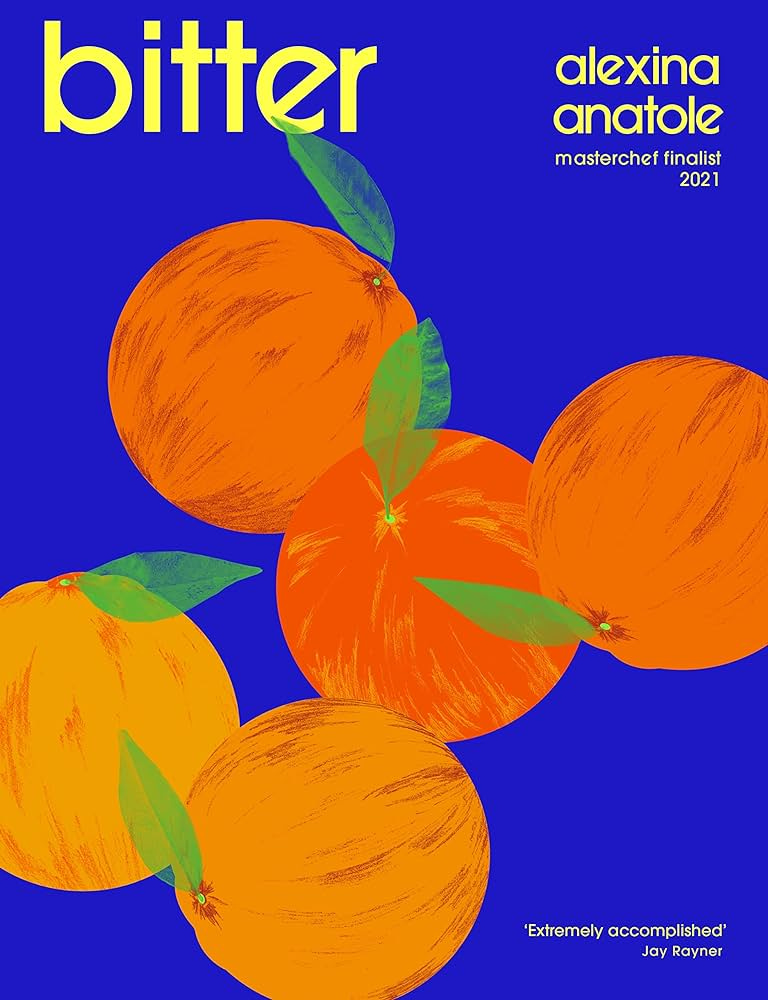
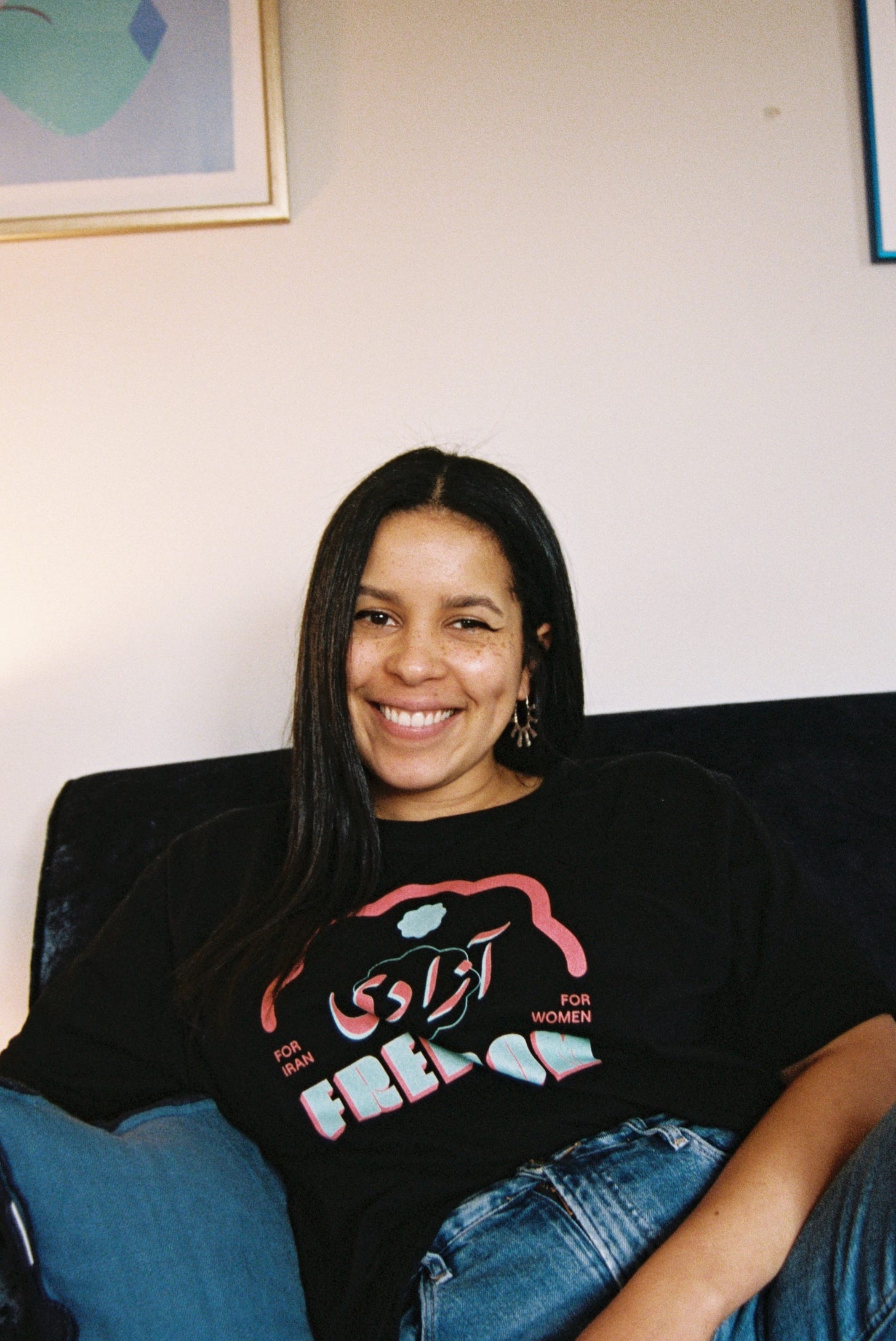

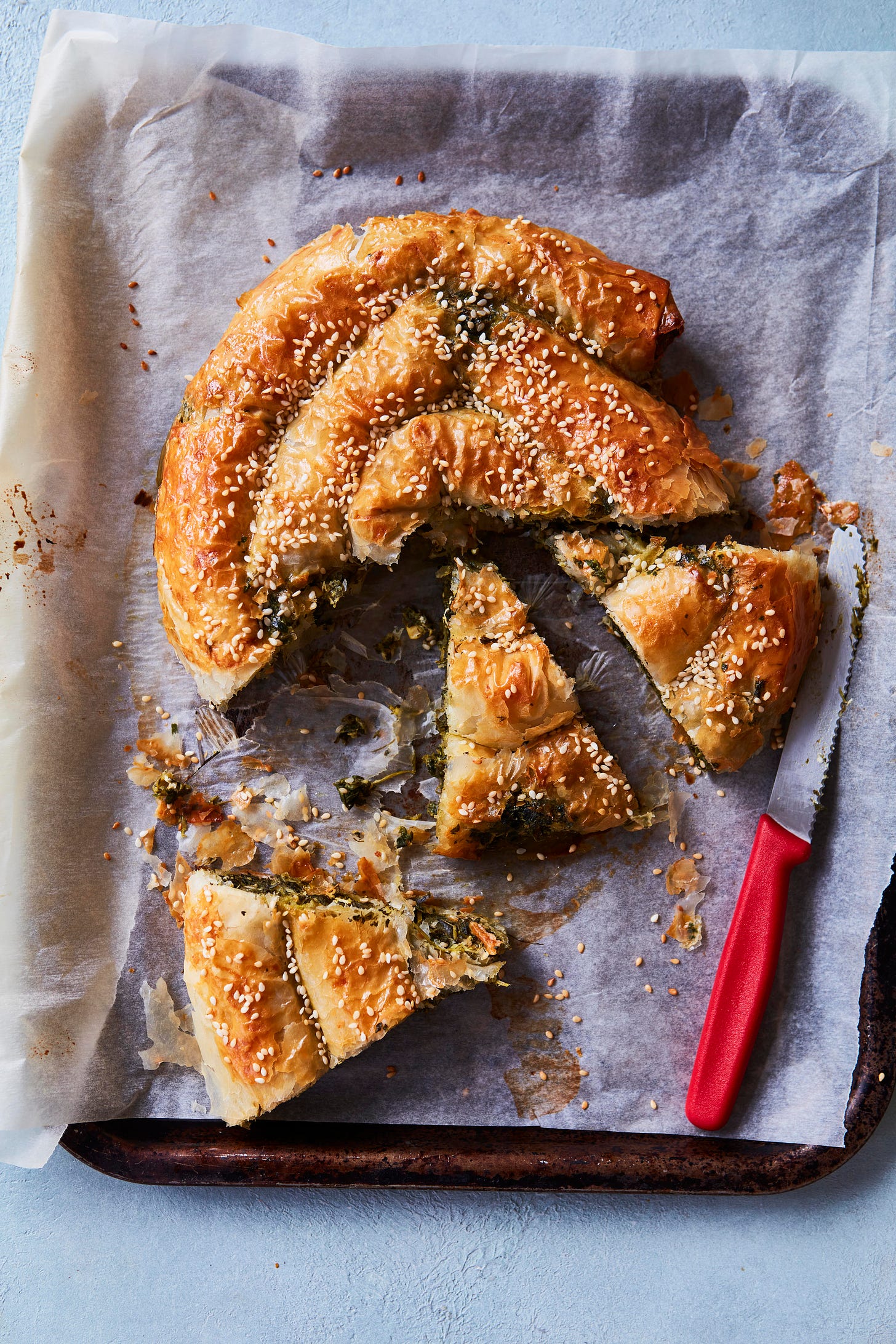
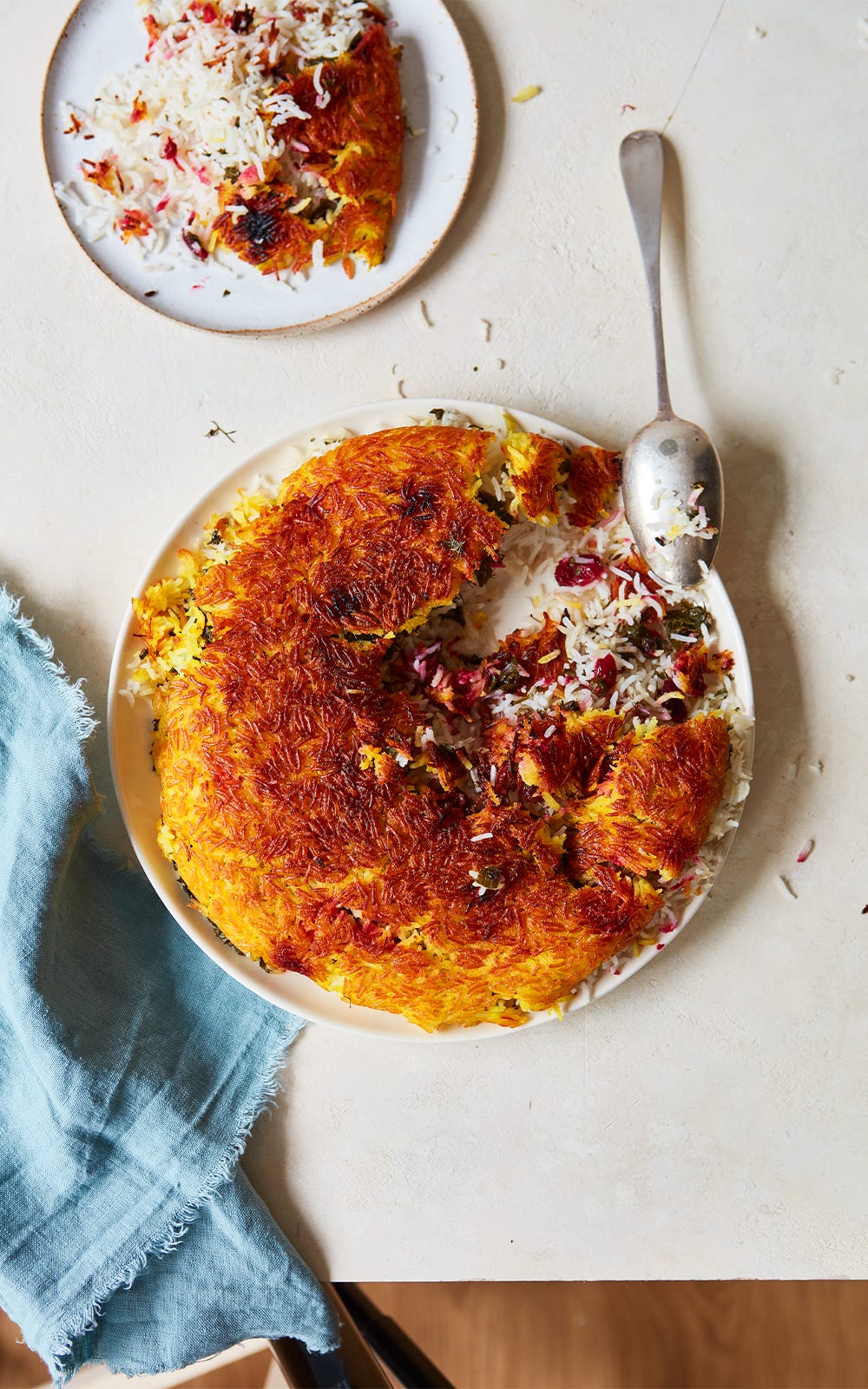
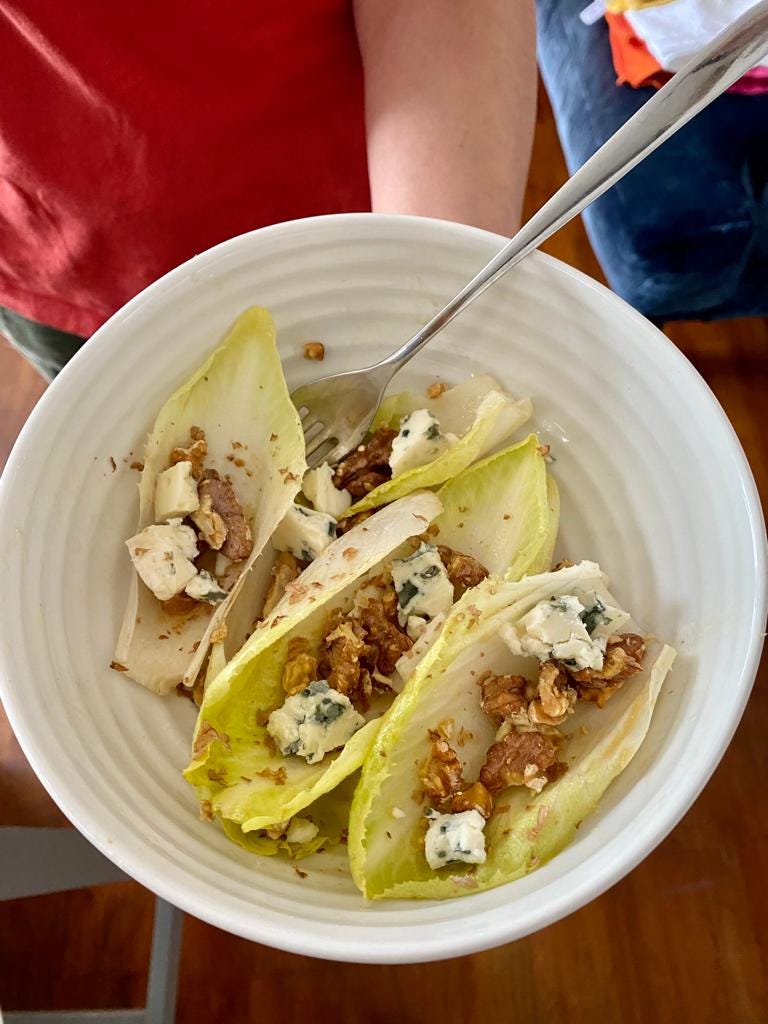
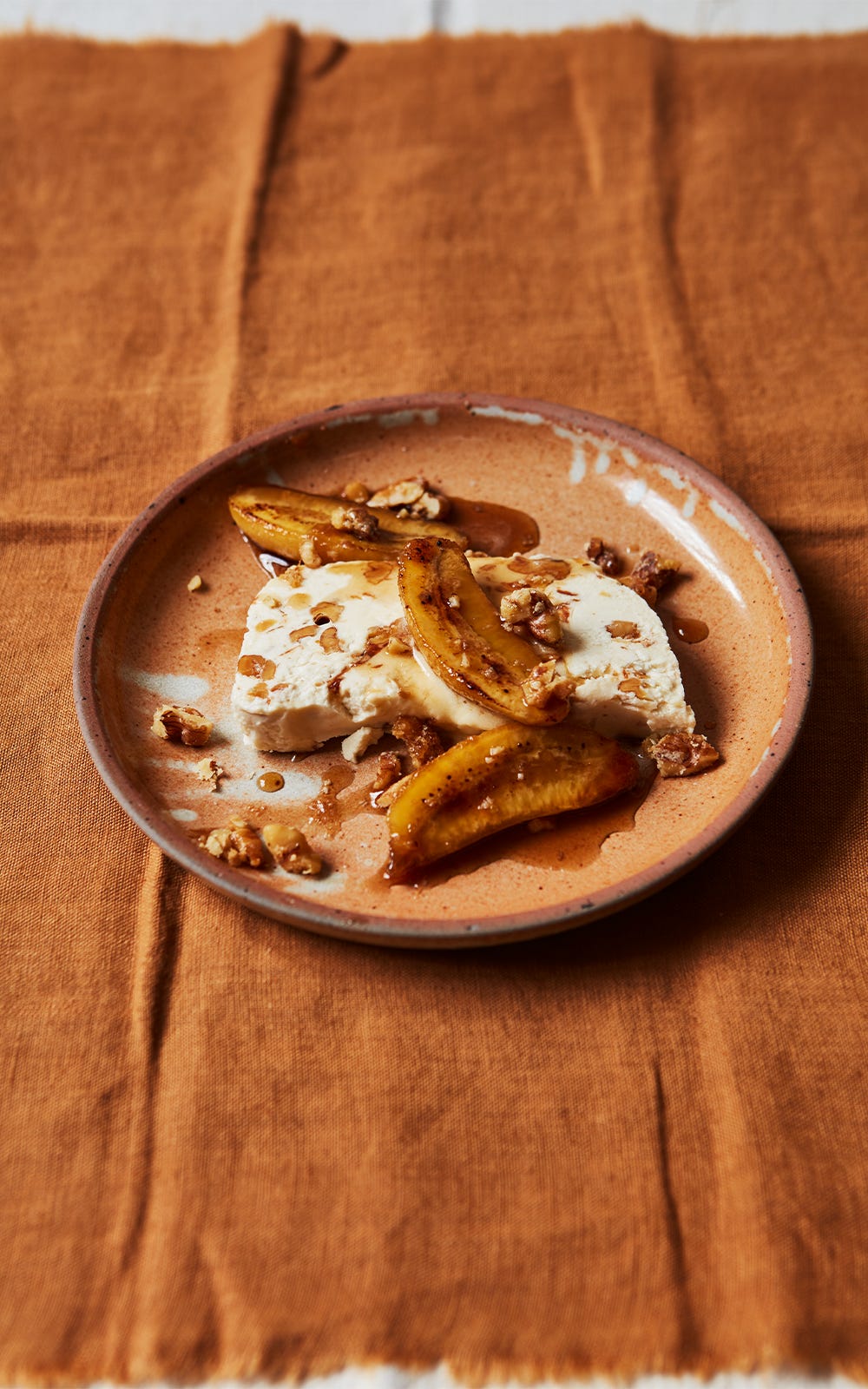

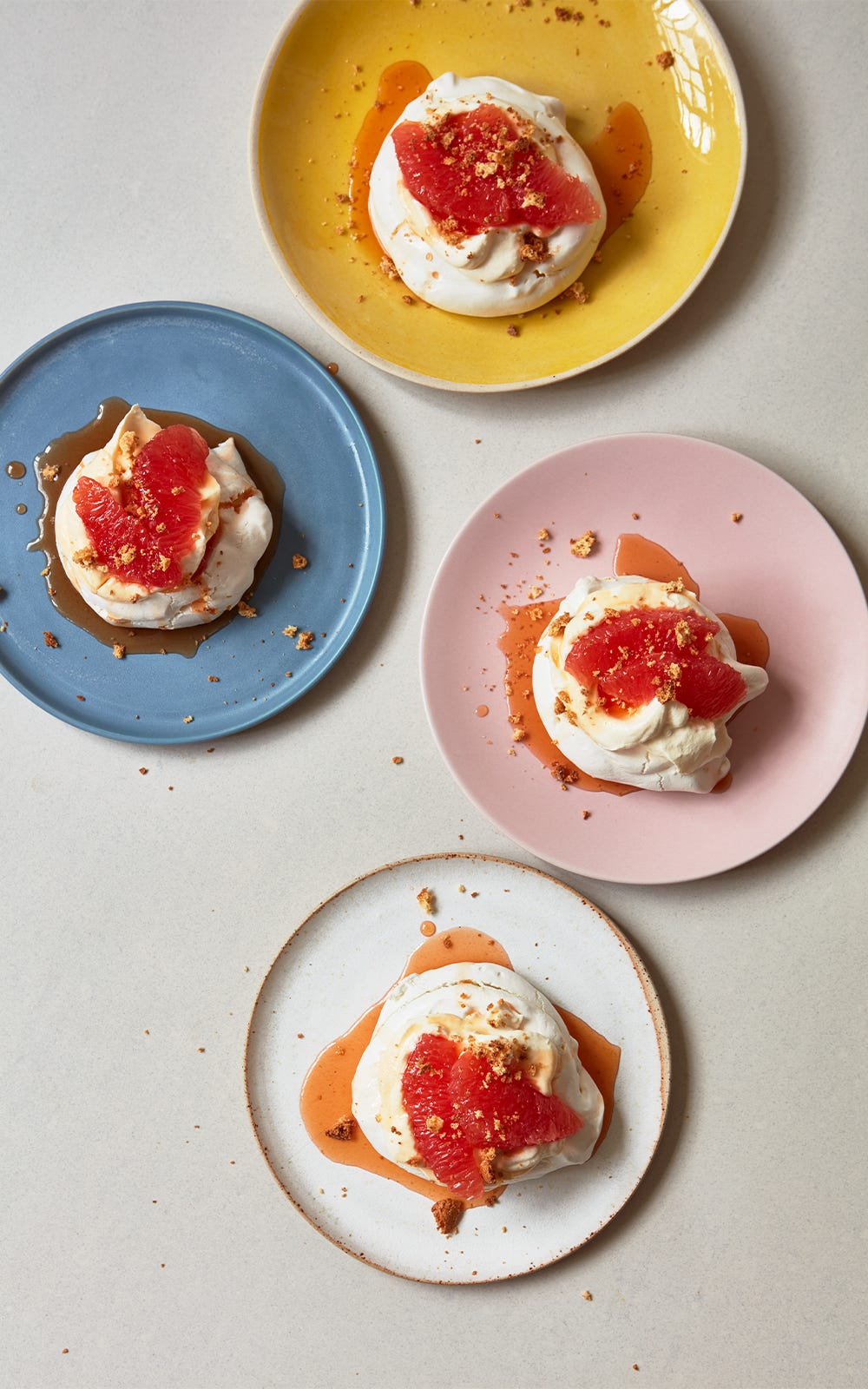

Oh wow. This baklava sounds amazing! And the book sounds really good - I do love bitter flavours.
i made it yesterday and it was truly delicious! thank you so much for the recipe ❤️
i only had to replace walnuts with pecans (because somehow i couldn’t find any walnuts), but they had the same bitterness!